Text
Projrct 5: Photo essay

Fig 1 - Henri Cartier-Bresson A man jumps from a wooden ladder. France 1932
In this photo, Henri Cartier-Bresson showcases his ability to capture the fleeting yet impactful moments that define our lives (Decisive Moment). An example of a decisive moment (see fig.1) In my perspective, this photograph conveys the concept. It shows a man's form clothed in work attire jumping from a wooden ladder with his feet barely touching the water's surface.
“How deep will he fall” (Erberlin, 2021) this emphasises the image's narrative of the precise moment that is captured, creating a sense of tension and drama in the photo. The man appears to be trying to keep himself dry and escape from all the water surrounding him. The image's background is blurred, giving a sense of quick movement as it happens. The reflection of the water directs the actions taken, centring the point of interest within the picture.
“Even when photographers are most concerned with mirroring reality.” (Sontag, 1973 p.4) This relates to the conceptual representation that Cartier Bresson tries to shape in his photography by creating an impactful scene that embodies his idea of a decisive moment. It captures and mirrors reality as it takes place, creating a dynamic composition.

Fig 2 - Perera, K. (2022) falling into the clear blue water. Boracay Philipines
Drawing inspiration from the timeless work of Henri Cartier Bresson, I studied a picture my sister captured that holds a similar essence of the decisive moment, as seen in Fig. 2. This photograph was taken during a family holiday on the famous Boracay beach in the Philippines. The photograph portrays a moment of disaster in which three individuals, myself and two cousins, are captured within the photograph.
The spotlight of the photograph is on none other than yours truly, tumbling clumsily into the water as my cousin attempts to save me from my impending fate. The photograph is in a decisive moment, freezing a split second in time just before the disaster that is occurring. It communicates a sense of impending catastrophe since the moment is stuck in time, waiting for the unavoidable to occur. In the background, the ocean waves create a gorgeous skyline, and little figures of people can be seen enjoying the seawater.
Both (Fig 1 and Fig 2) achieve the goal of capturing the decisive moment by offering a story that allows viewers to create an anticipated scenario through the images. “Photographs will offer indisputable evidence that the trip was made, that the program was carried out, the fun was had” (Sontag, 1973 p.6) This supports the fact that these images are evidence that my trip to the Philippines took place which resulted in satisfying memories and experiences. This photo captures the essence of the moment frozen in time. It gives off a familiar sense of the fun that was had at the time.

Fig 3- Solis, J (2022) intrusive battle, London excel comicon
This photo, taken at the London Comic Convention, features two friends of mine cosplaying as characters from the manga "Chainsaw Man." The deliberately staged decisive moment is vividly executed as they jokingly act out a fighting scene with fake wooden katanas, the picture effectively and comically capturing them in a momentary freeze-frame. My friends' excitement in this photo emphasises the significant effort they put into bringing the setting to reality with their dynamic and exaggerated poses. In my perspective, the photograph displays a pleasant example of a typical fun and easy-going mood at Comicon, with various people in the background in cosplay and enjoying themselves at the event. It portrays a modernised view of ordinary life, documenting events or significant moments as they happen. ”converting experience into an image, a souvenir” (Sontag, 1973 p.6) This supports that capturing the significance of an experience as a photograph creates a souvenir of a treasured memory. It serves as a reminder of the event and offers a way to relive the moment through the ability of visual representation as shown(Fig.3).

Fig 4 Elliott Erwitt Eiffel tower 100th anniversary. Paris, France. 1989.
Elliot Ertwitt is another photographer that embodies a similar ideal to Henri Cartier Bresson. Fig 4 depicts the ideal technique for capturing the decisive moment, which Elliott Erwitt uses in his photography to capture daily life moments.
The photograph presents a vibrant scene at the Trocadero in France close to the Eiffel tower, with a man in shadow leaping over a puddle holding an open umbrella. His leap brings him dangerously close to two other silhouetted figures holding umbrellas. The coupled subjects on the right side of the photo look to be in a private moment of romance. The wind appears to be blowing the umbrellas far to one side and it gives the sense of the weather condition as this picture was taken. It adds to the dynamic element of the scene, making it clear that this is a moment frozen in time. “To collect photographs is to collect the world” (Sontag, 1973 p.1) This idea is similar to Elliot Erwitt's attitude of capturing everyday moments as memory and exploring various aspects of daily life. It conveys the idea that photography is a way to gather and preserve moments from different places in the world and provides more scenery to the dynamic movements being made.
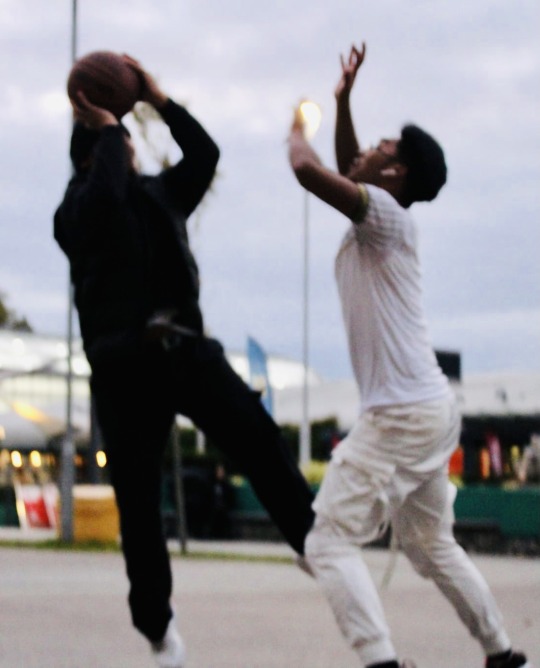
Fig 5 Samira k (2021) London, Middlesex university
This photograph, taken on an outdoor basketball court at Middlesex University, depicts a decisive moment involving two subjects: My brother and I engaged in an intense game of basketball. The composition effectively catches the blur, indicating the quick movement of the sport. The movement showed a basketball play known as the fade away to get an advantage over my opponent, who charges a leap to stop my shot and is dressed fully in white. The contrasting clothing of the two players creates an oxymoronic image that brings the idea of colour into the composition. This can be referred to as the game of chess in which black and white correlate to that idea. The blurred background shows the university building and eating area, reminding us that the shot was taken during our lunch break. Furthermore, the stillness of the background compared to the activeness of the people in the picture creates an ironically dramatic atmosphere. There is an obvious sense of tension, leading the viewer to wonder whether I (dressed in black) successfully scored a shot over my brother (dressed in white) or if my brother blocked the shot.
“Photography has become one of the principal devices for experiencing something, for giving an appearance of participation”.(Sontag, 1973 p.7) This photo gives an example of the idea of enthusiastic participation in a game, with the participant being so immersed in their actions that they may be unaware of their surroundings or that their picture is even being taken. Even viewers who are only watching from a distance, or looking at the photograph could feel the intensity of what’s taking place.
Bibliography:
Eberlin. A (2021) 02. Behind Gare Saint-Lazare by Henri Cartier-Bresson
Available at: https://world.hey.com/eberlin/02-behind-gare-saint-lazare-by-henri-cartier-bresson-106c2090 (Accessed: 30 March 2023)
(2022) “Henri Cartier-Bresson and His Most Famous Photos - Invaluable.” Invaluable, Available at: https://www.invaluable.com/blog/henri-cartier-bresson-and-his-most-famous-photos/ (Accessed:29 March 2023)
Luntz. H (2015) Elliot Erwitt’s Paris, France (Umbrella Jump) Holden Luntz Gallery
Available at: https://www.holdenluntz.com/magazine/new-arrivals/elliott-erwitt-paris-france-umbrella-jump/
(Accessed: 30 March 2023)
Rubin. M (2022) The Decisive Moment: What Henri Cartier-Bresson Actually Meant, PetaPixel, Available at: https://petapixel.com/the-decisive-moment/
(Accessed: 2 April 2023)
Scharf. A (n.d.) Henri Cartier-Bresson, French Photographer, Britannica
Available at : https://www.britannica.com/biography/Henri-Cartier-Bresson (Accessed: 2 April 2023)
Sontag. S (1973) ‘On Photography’ New York, RosettaBooks
Figure:
Fig 1 - Henri Cartier-Bresson A man jumps from a wooden ladder. France (1932)
Fig 2 - Perera, K. (2022) falling into the clear blue water. Boracay Philipines
Fig 3- Solis, J (2022) intrusive battle, London excel comicon
Fig 4 Elliott Erwitt Eiffel tower 100th anniversary. Paris, France. (1989).
Fig 5 Samira k (2021) London, Middlesex university
0 notes
Text
Project 4
I visited family in the Philippines for the Christmas holiday and took this picture there. Because of the expensive price of flying, I haven't seen my family in more than 6 years. I travelled for a total of 19 hours to arrive in Manila, the Philippines manila. During the time when this photo was taken, I was spending some time on a famous island called Boracay, which is known for its white sand and pristine beaches and also requires that you take another plane and boat to travel to the island.
In the picture I have taken, there are multiple tall, luscious palm trees aligned next to each other, back and front, with the angle gazing upon the bright blue skies with hints of small white clouds roaming above the island, and the background of the picture presenting small clubs and restaurants. The angle at which I have taken the picture suggests that I took it while lying down on white sand, relaxing and enjoying the scenery next to some palm trees, which gave me shade to protect me from the burning sun. The picture taken would get the impression that it would encourage viewers to want to travel and make them want to experience and go on holiday to the island.
“Snapshots as Souvenirs” implies the picture I have taken I took it as a souvenir as a reminder of what I have experienced during my time in the Philippines which was a very fun exhilarating moment of my life and I only get to appreciate this moment once in a while.

0 notes
Text
The Falling Soldier
For our Friday session, we were divided into small groups to discuss an image that had been handed to us. "The Falling Soldier" by Robert Kappa We began by reading a book called 'On Photography,' which we used as a source of quotations to help define our photograph. "Photographs are truly experience captured" highlights the idea where we analyzed the content towards how the image shows a soldier getting shot in the head and falling to the ground dead during a Spanish civil war.
As we were discussing ideas, I had first impressions of the image we were given. At first sight, I didn't think the photograph was real and wondered, "How could the cameraman acquire a snapshot between a conflict and they aren't dead?". As we looked into "the falling soldier," we came across suggestions that indicated the photo was faked.
However, when we did more research, the faked photograph became more of a symbol, with the image being made into monuments to depict the civil war and establish a reminder and awareness of the event. "Emotionally impacting" implies that the photograph creates feelings in the spectator and provides an example of how the civil war was incredibly significant, with many soldiers taking their own lives and sacrificing themselves.

0 notes
Text
Diminishment of the male gaze acknowledging women's identity.
Identity is a self-understanding theme that explores the fundamental characteristics of each person's human mind. We consider the question of how identity makes a person by gaining comprehension of this concept. Identity is portrayed as ‘fluid rather than fixed,’ (M. Knaster, 2017) indicating that it may change and adapt rather than being a permanent, unchangeable perception. This strengthens identity, showing that it is not based on a set of unchanging characteristics. People can gain features that develop within them through experiences. Identity is a fascinating concept. It creates a depiction of people through their unique personalities and portrays how they live their lives and what they experience to form what identity they have for themselves. People can use this to continue building their careers and life around their persona.
For instance, in art, the artist uses the theme of identity to represent their personal meaning. Cindy Sherman (b. 1954) is well-known for her self-portrait photographs. She portrays herself through a variety of settings and fictional characters. She uses the concept of identity in her work to inspire her audience to think about how we perceive ourselves to others. She presents her identity as more complex than normal societal standards. In her work, she mostly creates photographic self-portraits of herself through the use of her experimenting with facial expressions in different settings. Self-expression is an important aspect of presenting one's identity; the creative use of self-expression is used to illustrate the means and depth of a piece.


Figure 1: ‘Untitled Film Stills #3’1977 Figure 2: ‘Untitled Film stills #2’ 1977
‘Untitled Film Stills’ (Figure 1 and Figure 2) is a developed series of works in which she displays multiple staged settings where she explores her own in-depth meaning in her work. She presents in her series of different characters and roles that there are multiple identities. She shows this by including various props and costumes to create different scenes. Her images are in black and white, suggesting that her work is timeless. This means that difficulties of representation are not relevant to a certain age or location. The series is a discussion of how women are depicted in the media and how these portrayals impact our perceptions of gender and identity. It also represents the standard of male attitudes toward women. Additionally, it depicts how women are represented in many media genres, including how social expectations impact how women define themselves.
Furthermore, Cindy Sherman's work challenges the concept of the ‘Male Gaze,’ in which director/writer Laura Mulvey supports Cindy Sherman's disapproval of female identity being viewed as inferior mainly by males in the film industry and art out of pleasure. Both Sherman and Mulvey want to confront these representations and offer a different viewpoint on female identity, criticizing the portrayal of women in Hollywood films and popular culture, as well as how these portrayals support traditional gender stereotypes.
In her article, Laura Mulvey (b. 1941) highlights the representation of women and protests on the Male Gaze. as well as features of the narrative film and how it is problematic for females. It reinforces sexist ideas and the perception that women are inferior to men. ‘The female figure is stripped of its autonomy and reduced to an object of vision for the male subject.’ Women are frequently portrayed as simple things to be gazed at for pleasure, rather than as completely independent and complex beings. They are considered to be people meant only for male satisfaction and are disregarded in terms of their own independence. ‘The eroticism of the spectacle is something that the spectator contemplates, something he consumes.’ This reinforces Mulvey’s statement on male satisfaction. The viewer is encouraged to consume and contemplate the erotic display of the female form.
Cindy Sherman's "Untitled Film Stills" feature mysterious and disturbing photographs of women in passive or uncomfortable positions. These images are based on stereotyped portrayals of women and reflect the "male gaze" on audiences. Sherman's distressing scenes are intended to create an uncomfortable emotion in the spectator, while also providing a feminine viewpoint on how males perceive women. Sherman's photos seek to portray and critique societal stereotypes of women.

Figure 3: “Untitled Film Still #48” 1979
"Untitled Film Still #48" is a clear example. It shows a lady standing alone and exposed on the side of the road with her carrier. The photograph captures her from behind, implying that she is unaware she is being watched. This supports the theme of the series, creating the same unsettling feeling in her audience. This captures Cindy Sherman's perspective.
Moreover, Laura Mulvey's article clearly states that women are depicted erotically in order to satisfy the male gaze. Cindy Sherman's work emphasizes this concept by using costumes, makeup, and wigs to create visually appealing pictures that sexualize women. She exaggerates the female images and explores topics of identity, making the outcomes of her practice easily noticeable.

Figure 4: ‘Untitled Film Still #6’ 1977
‘Untitled Film Still #6’ is another extension. It displays a lady posing in her underwear while lying erotically in her bed. Cindy Sherman emphasizes the visual conception of how women are perceived through the male gaze, where a woman's body is put on display and her person is undermined and ignored.
In conclusion, Sherman and Mulvey use visual media and context to provide a very powerful introduction and theory about women's identity. Sherman's costumes, makeup, and wigs make a strong statement about how the created aspect of identity is affected by dominant ideologies and expectations. Women are objectified by society, yet Sherman and Mulvey oppose and criticise this issue in response to the male gaze. With the aid of Mulvey's piece, Cindy Sherman's work displays the power of photography, making a very impactful step towards the destruction of the patriarchal gaze. Her work encourages us to explore how women are treated and sexualized in visual media, asking us to rethink both these interpretations and our own concepts of identity. Cindy Sherman's art is a strong reminder of the significance of self-expression as well as the necessity for a more detailed and diverse depiction of women in visual media.
Bibliography:
Cindy Sherman’s Untitled Film Stills - Her Groundbreaking Self-Portraits, Public Delivery, Available at:
Knaster, Mirka. “Expressing Identity Through Art &Mdash; MirkaArt.” MirkaArt, 8 Oct. 2017,
Gaylord, K (2016) Cindy Sherman, American, born 1954, Available at:
Graf, S (2021) How Cindy Sherman's Artworks Challenge Representation of Women, The Collector, Available at:
James, R (2016) Mulvey’s “Visual Pleasure & Narrative Cinema” Without All The Psychoanalytic Theory, It’s Her Factory, Available at:
Mulvey, L (1975) Visual Pleasure and Narrative Cinema, Screen Volume 16, Issue 3
Figures:
Figure 1 - ‘Untitled Film Still #3’ 1977
Figure 2 - ‘Untitled Film still #2’ 1977
Figure 3 - ‘Untitled Film Still #48’ 1979
Figure 4 - ‘Untitled Film Still #6’ 1977
0 notes
Text
Project 3 Research
Many artists have used art to explore questions about their identity.
Identity is fluid rather than fixed.
Personal experiences/socio-political realities of our time can revise how we see ourselves or how others perceive us.
As individuals/members of communities, we keep reconsidering our place in the world, wherever we live.
Expressing Identity Through Art, Mirka Knaster, October 8th 2017
-What does Self-Expression mean?
It is the ability to convey one’s personality, opinions or emotions through creative means such as painting, drawing, music and more. This is a form, too, of social expression and connection.
-Is Art a Way of Expression?
All forms of art such as painting, drawing, music ceramics, all of these mediums can be used for self-expression art. Art has always been a way of communicating through images and colour and therefore is a form of expression.
Self-Expression Art - Thrive and Share Yourself With Others, gonerminimal.com
Identity in modern art is a broad and exciting theme, allowing the viewer to gain new perspectives and understanding of other people’s lives.
For artists that draw inspiration from their identity, the work becomes a podium for exploration, expression and connection.
Identity is such an important subject in Modern Art. It can be used to celebrate an identity or it can be used as a platform to express and reach others what life can be like from another perspective.
Through art, we can learn so much about another person’s life.
Identity in Art, Gemma Compton, May 11th 2020
Identity is never constant and is subject to change. Past identities become memories that are recalled through inward and outward reflection.
Artist research:
Michael Reeder

'Sacred Journey' by Michael Reeder
.Michael Reeder's artwork inspires reflection by encouraging the audience to reconsider their sense of self.
Michael Reeder's expressive painting explores themes of identity. He is mainly exploring the unique characteristics of the person that make up the original construction of self.
Reeder's art stands out because of its dramatic use of colour, striking geometric patterns, and realism.
Michael Reeder grew up inspired by the local skate and street culture. From an early age, Reeder was drawn to the underground, hidden, yet highly public style of painting graffiti.
He constructs a fresh identity with each new painting
inspired by the themes of identity and human death
He wants the audience to have their own idealism about their own identity and significance in relation to his art.
Cindy Sherman

-Cindy inspires us to consider how we view and exhibit ourselves to others because she shows identity to be more delicate and complex than society's simple concepts represent.
-American artist Cindy Morris Sherman mostly creates photographic self-portraits of herself in various settings and as various made-up personalities.
-Sherman's research discusses social standards and stereotypes, particularly those related to gender and media representation.
American artist Cindy Sherman, born on January 19, 1954,
is well known for her photographic self-portraits. She uses several different settings and fictional characters to represent herself.
She critiques gender and identity in her works of art.
Cindy Sherman's work aims to depict the multiple roles and personas of herself and other contemporary women
Tate. “Cindy Sherman Born 1954 | Tate.” Tate, 1 Jan. 1975, www.tate.org.uk/art/artists/cindy-sherman-1938.
Laura Mulvey visual pleasure and narrative cinema
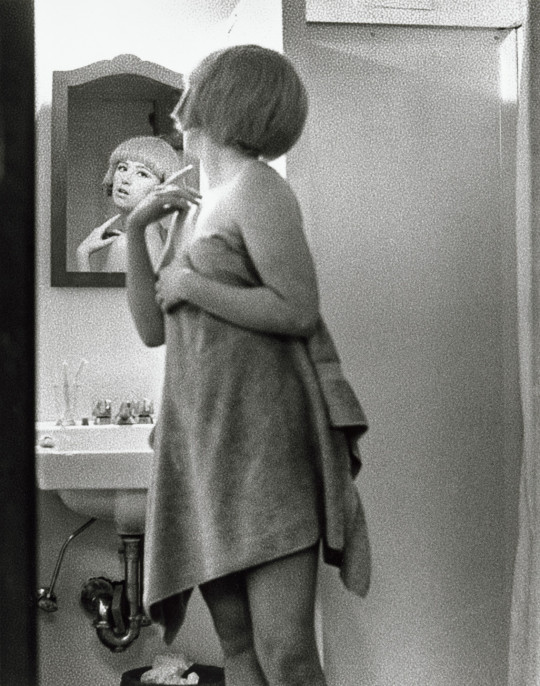
Mulvey's theory of the male gaze in Hollywood films says that the way female characters are portrayed supports traditional gender roles and a patriarchal idea of identity.
She claims that women are frequently portrayed as objects of male desire and that the media shapes their identities
female form portrayal in narrative cinema is problematic.
Mulvey's article and Sherman's photo series both criticise how women are portrayed in Hollywood films and popular culture, and how these representations reinforce traditional gender roles.
Mulvey's work focuses primarily on the representation of women in Hollywood cinema, whereas Sherman's work focuses on the representation of women in photography.
Mulvey's portrayal of the identity of women in classic Hollywood movies supports misogynistic and stereotyped social ideas by removing them from their independence and lowering them to objects to be consumed and manipulated by the male subject.
Quote
‘the female image as a castration threat constantly endangers the unity of the diegesis and bursts through the world of illusion as an intrusive, static, one-dimensional fetish’
-The statement believes that, in general, how women are portrayed in movies can be problematic and feed negative stereotypes.
"The female figure is stripped of its autonomy and reduced to an object of vision for the male subject."
-This quote indicates that Women are commonly presented as simple objects to be looked at and consumed for pleasure, rather than as fully independent and complex characters. They are viewed as something to be used by men's interpretation and are significantly ignored from their own freedom
"The eroticism of the spectacle is something that the spectator contemplates, something he consumes."
-The quote indicates that the way women are portrayed in Hollywood cinema is mainly for the male spectator's visual pleasure, and the viewer is encouraged to consume and contemplate the erotic display of the female form.
James, Robin. “Mulvey’s ‘Visual Pleasure and Narrative Cinema’ Without All the Psychoanalytic Theory.” Mulvey’s “Visual Pleasure & Narrative Cinema” Without All the Psychoanalytic Theory, 5 Oct. 2016, www.its-her-factory.com/2016/10/mulveys-visual-pleasure-narrative-cinema-without-all-the-psychoanalytic-theory/#:~:text=Mulvey%20argues%20that%20the%20pleasure,%2C%20i.e.%2C%20the%20fourth%20wall.
“Explaining Psychoanalytic Theory in Laura Mulvey’s ‘Visual Pleasure and Narrative Cinema.’” Acacia, 11 June 2021,
acacia.gay/2021/06/11/explaining-psychoanalytic-theory-in-laura-mulveys-visual-pleasure-and-narrative-cinema.
Untitled film stills

Untitled Film Still #3 by Cindy Sherman, 1977. Photograph: Cindy Sherman. Courtesy of the artist and Metro Pictures, New York
What is the purpose of Untitled Film Still?
Untitled Film Stills by Cindy Sherman is a series of self-portraits that feature stereotypes of women
The portrayal of women in popular media, particularly in cinema and photography, is the main subject of Sherman's work. She looks at how women are portrayed in various media and how social expectations influence how women identify themselves.
She purposefully played female characters in Hollywood films to protest identity portrayal and stereotyped femininity.
Quote: “I wish I could treat every day as Halloween, and get dressed up and go out into the world as some eccentric character.
“Cindy Sherman’s Untitled Film Stills – Her Groundbreaking Self Portraits – Public Delivery.” Cindy Sherman’s Untitled Film Stills – Her Groundbreaking Self Portraits – Public Delivery, publicdelivery.org/cindy-sherman-untitled-film-stills. Accessed 28 Jan. 2023.
“How Cindy Sherman’s Artworks Challenge the Representation of Women.” TheCollector, 18 July 2021,
Oreet ashery-

-She creates frequently challenging pieces that explore relationships between men and women as well as those between women and cultural identity by drawing on her own politics and identity.
-Her artwork includes live art, video, 2-D image making, objects, text and the internet
-Oreet Ashery's work explores the connections of gender, race, religion, and ethnicity, as well as the nature of identity.
-In Oreet Ashery's work, illness is used as a metaphor for identity.
- She explores how illness shapes identity and considers the concept of 'misbehaving' or 'abnormal' bodies.
-She also focuses on other issues such as identity, self-care, and cancer metaphors
Within the collaboration with jo Spence working with Oreet Ashery, they portrayed multiple images of people with the condition as the cameraman is the therapist and
0 notes
Text
Group Manifesto
My group's manifesto is about sleeping. We as a group agreed on this theme as we wanted to aim for something relatable and light-hearted. We did a meeting to brainstorm our ideas and how to present them in our manifesto. We assigned each other roles to do certain research on aspects of sleeping. I researched the benefits of sleeping. Personally, from what I've learnt, I should take this as advice for myself. I also created my own illustration and added it to the presentation my group worked on together as we did our own individual slides. What I learnt from this project is that manifestos can bring awareness to any topic that anyone can see as important no matter how big or small it is.
Working in my group has been very enjoyable, all of us really resonated with the topic we chose and related to each other because of it. It has been a fun experience.
Unfortunately, I wasn't able to present with my group because on the day I was travelling for the Christmas holidays. I did care about the outcome, so when I asked about how it went, I was happy to hear it went well. I'm really satisfied with my group's chemistry and the work we put together.

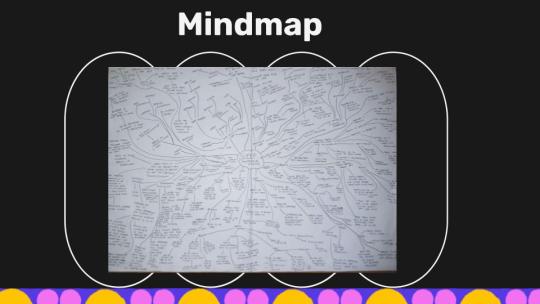




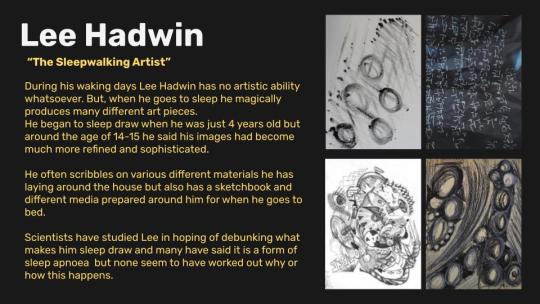
0 notes
Text
Manifesto
Looking through the '100 Manifesto,' I skimmed the contents page and each individual manifesto title.I had difficulties choosing a manifesto since I wanted to follow a manifesto that interested me. I chose a manifesto by Takashi Murakami that explores further into his'super flat' visual movement. His manifesto's purpose is to showcase more of his culture to the globe, where he has modernised Japanese culture and shows more of his contemporary art.
‘Takashi Murakami is a modern artist who works in many mediums, breaking the lines between high and low culture, art, graphic design, fashion, animation, and illustration.’
I took additional research outside of the 100 Manifesto book because I wanted to learn more about superflat, which I didn't find reliable with the 100 Manifesto sources and understanding of the Takashi Murakami movement. In comparison to American artists such as Andy Warhol pop art , Takashi Murakami sought to create an image of Japanese culture where he presents the superflat that highlights the conception and utilisation of anime and manga.The expression "superflat" is most commonly used to draw attention to the media, entertainment, and consumption that characterize Japanese culture.
'What is art to Japan'.
His manifesto/message was to demonstrate the many forms of art and how pop culture in art can be expressed through Japanese culture using westernised imagery to showcase a past, present, and future representation of his work using elements from historic traditional Japanese art where he linked them all together showcasing a unique portrayal of his culture where he received a lot of attention for spreading and promoting pop art approaches in ways that American critics did not understand.
My thoughts on how he pursued his career by presenting his culture and his country to the world using reference and the idea of using anime and manga. His manifesto conveys more of Japanese culture where it has been modernised, or like linking his work with old traditional Japanese art and making it his own exhibiting pop culture in current times.
The term "superflat" is most often used to bring attention to the media, entertainment, and consumption that pervade Japanese culture.where he executed it really well and succeeded as an artist.
0 notes
Text

This is my mapping illustration of my journey to university, which uses Stanley Brouwn's visual concept to demonstrate critical movement and direction attributes. My representation of my sense of direction is based on memories of being aware of my surroundings and the routes I would take to arrive at my destination. I've depicted in simple terms how a map would visually present itself, but according to Brouwn's interpretation of how he began his work, he obtained it from strangers, where he asks a stranger to use their memory and sense of direction to illustrate a point for him. Personally, unless I was lost, I would feel awkward asking a stranger.
To demonstrate more of Brouwn's concept, I illustrated the directions of my walk in my mapping. Where I leave my house at 9 a.m., near a busy road crowded with business people, travellers, and tourists, where there are some days when it's so crowded that I'm afraid I'll be late.There is a lot of emotion in the morning; people are tired, stressed, and sad because mornings are usually not pleasant.
In conclusion, my walks have taught me more about my surroundings and the environment. Recognizing that I have a good sense of direction, particularly in my area, but overall, I need to leave this country and explore and gain new experiences, as I learned from my artist research that he only visited Amsterdam, to create his work ‘This Way Brouwn’
2 notes
·
View notes
Text
Project 1 - Keep walking intently
I continued my research and looked up more artists. In my previous research,Richard Long presents more of the vulnerabilities in people and their kind of walks, giving a sense of texture,rhythm and imbalance to the surface. However I decided to move forward where I have found the artist Stanley Brouwn to expand on my research from Richard Long because he incorporates more with his sense of direction when on his walks which I found more interesting. He makes use of people's initial perceptions of direction and movement
This Way Brouwn, his most well-known piece, was produced in 1962 and is a collection of maps that ordinary people drew to show how to get somewhere. I represented my own interpretation of it using his concept. It would be awkward for me to do so in public as I am socially awkward, so I have asked a few friends who I feel more comfortable asking instead of approaching strangers on the street and asking them to use their portayal to illustrate a location to another, as he would do. I gathered illustrations from them and these are their interpretations asking them how they would get to a location for example “how would you get to kings cross?” as my initial concept to present a sketch of direction:




During Brouwn walks, I was able to observe his practices more closely. A step-counting exercise was included in another book series that thoroughly tracked the movements of his practice. In addition, I used this in my own work, updating his idea with modern cultural devices. Whereas Brouwn counts his steps by hand, I track and log my daily steps using an app.I was particularly interested in seeing downtown London since it provided additional entertainment for my walks, was close to my house, and was a convenient location to have some time with friends.

The last practiceI learned from him was, in my perspective or how I thought at the time, fairly straightforward and dramatic. He spread out pieces of paper for people to step on and leave dirty shoe prints on. Because I was surrounded by a large number of pedestrians and didn't want to feel awkward by oddly dropping a piece of paper to the ground to be trampled and picking it back up, but I did at the end of the day with an outcome:

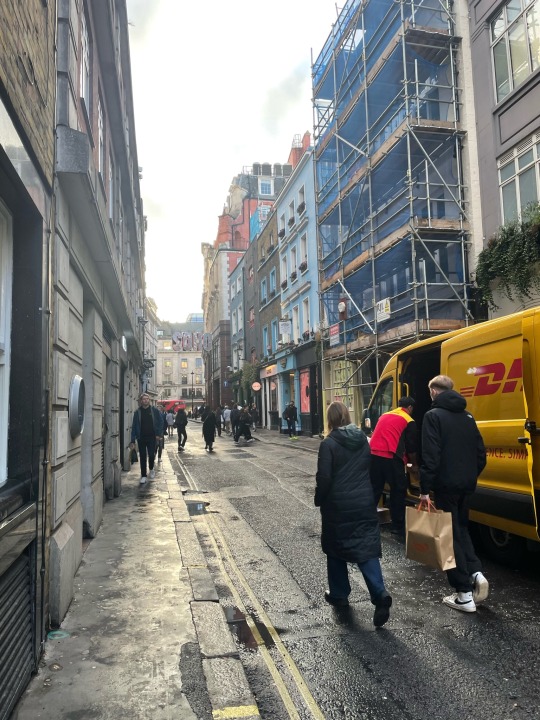
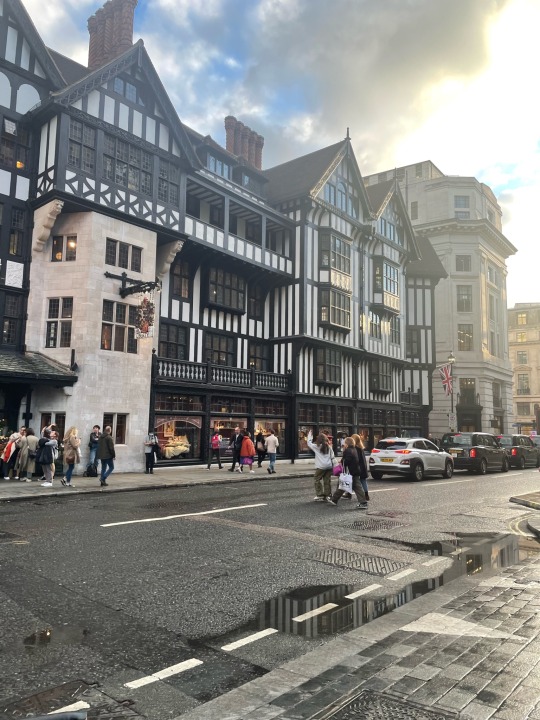
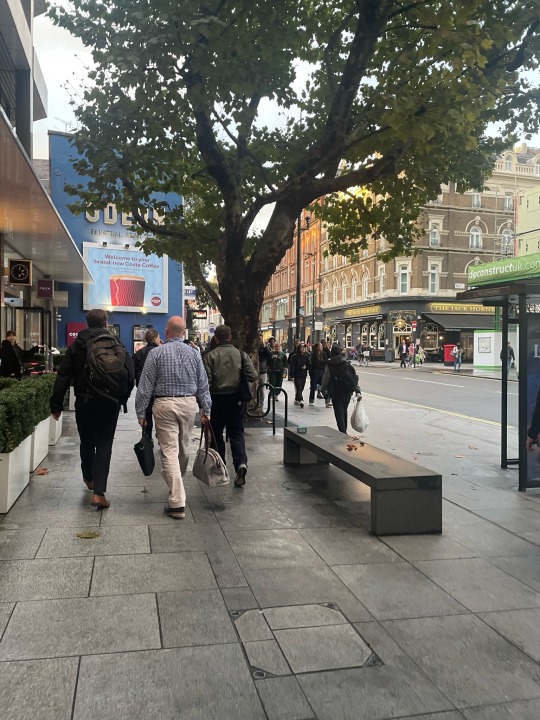
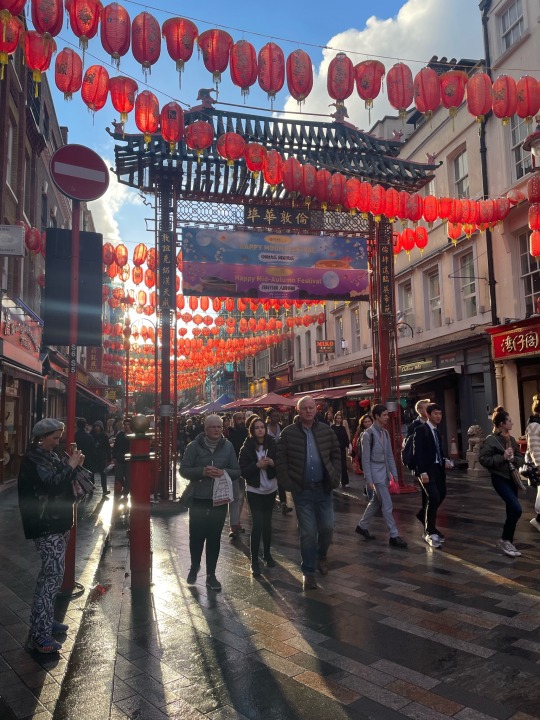
0 notes
Text
Richard Long
I chose Richard Long even though I was unable to watch his film “stones and flies” . I was really interested with his work and his analysis towards his creations through using and understanding landscape and sculpting.
I was able to watch Aine Philips' other short film, "Coming Full Circle," and I was really intrigued by how he depicted his work by using the landscape to detail the land while showing unidentified people walking along the cracked surface in silence as they circle around the strategically placed circle of rocks.I made an effort to incorporate the types of walks he would undertake into my conception of how people would interact with. He serves as an example of how, by nature, people are extremely vulnerable to environmental hazards.
Given that it was closest to my home, I walked up Warren Street and toward Regents Park. I discovered many textures and an abstract representation of life. I took pictures that would illustrate some of Richard Long's uses of nature. I recently took a walk that, along with some of his creations, brought back memories of my younger years, when I used to spend all of my time in the park. It brought to mind an abstract and unsteady moment of running around.
0 notes
Text
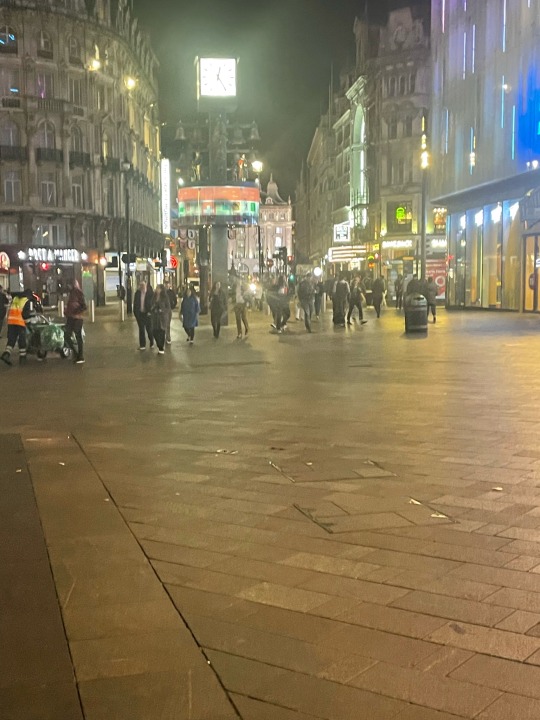







Project 1- Keep walking intently
Picture/video ive taken on my walk
0 notes
Text
Project 1 - Keep Walking Intently
I'm being sincere here. I rarely leave the house since I hate being outside unless I have a clear purpose; otherwise, turning left or right is usually all that is needed. While I do turn left and right at times during my stroll, it is the environment's contrast and variety of forms that give my walk its texture and rhythm. I went for a late-night walk around downtown London's Rawring Roads after seeing a movie with a few friends before leaving for home.It seemed like a good starting point for my walk-related writing.
I was observing my surroundings, taking in the happiness, amusement, drama, and melancholy from the public. I could hear people shouting enthusiastically as lights shone over me, and I could see large crowds of people moving about.After spending the evening with my friends, I discovered that tfl had stopped all train service and i had no choice to walk home alone.
The crowds start to get denser with fewer people as I move further and further away. The environment gradually changes as I become more wary of my surroundings while out on my own in London on a supposedly dangerous night, believing that any danger could happen to me. The closer I got to home, the safer I felt.
1 note
·
View note









